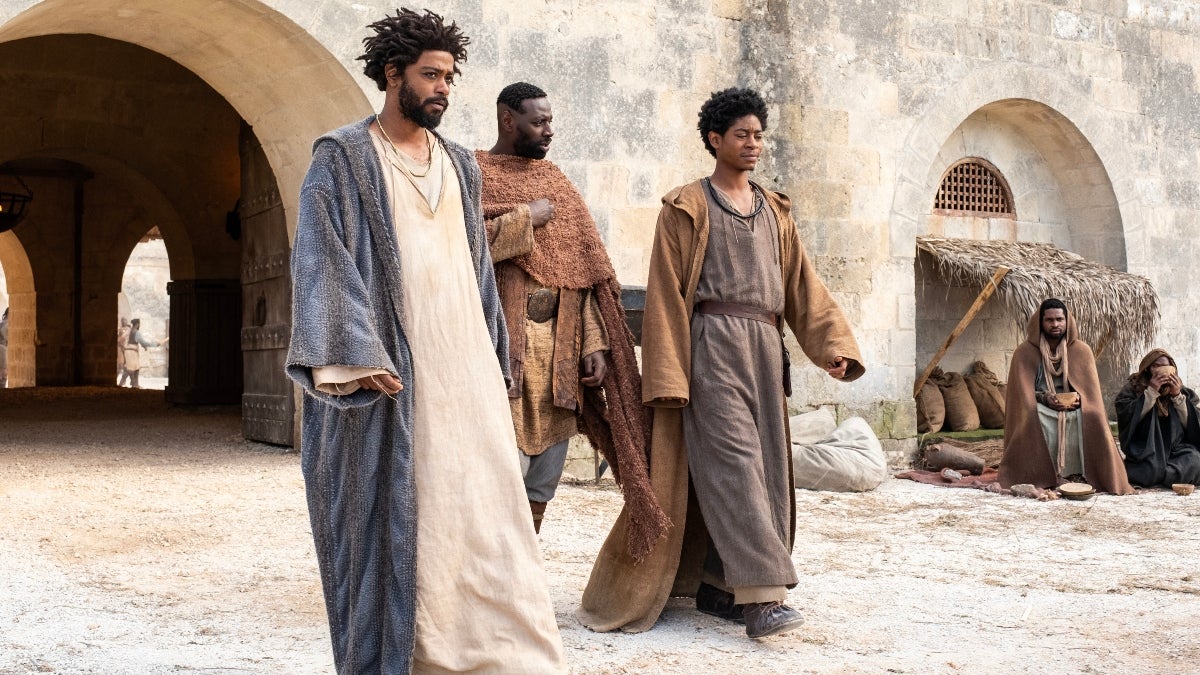“The Book of Clarence,” directed by the ingenious Jeymes Samuel, emerges as a groundbreaking and brash biblical epic, marking a bold departure from traditional, white-dominated film genres. In this audacious cinematic venture, LaKeith Stanfield delivers a mesmerizing performance as an unlikely Messiah, leading a dynamic, predominantly Black ensemble cast.
Samuel, known for his vibrant and revisionist approach in “The Harder They Fall,” continues to challenge and redefine cinematic norms in this epic narrative. “The Book of Clarence” is not just a film; it’s a cultural phenomenon that intertwines humor, action, and spirituality in a way that midcentury Hollywood never dared. Set in the tumultuous year of 33 A.D., the film presents a kaleidoscopic view of Jerusalem, alive with colorful characters and bustling with energy.
However, the film has been criticized for its farcical elements and a narrative that some viewers find confusing. The script’s attempts to balance satire with a journey of self-discovery receive mixed reactions, with some finding the humor misplaced and the political undertones underdeveloped. The portrayal of Romans as a metaphor for white supremacy, for instance, is considered lacking in complexity.
Stanfield’s portrayal of Clarence is nothing short of brilliant. He is a charismatic, somewhat roguish figure who embarks on a transformative journey from skepticism to faith. The film’s audacious narrative, paralleling the life of Jesus, is both daringly blasphemous and deeply respectful of Christian themes.
The visual storytelling in “The Book of Clarence” is a feast for the eyes. From the kinetic energy of a chariot race that rivals “Ben-Hur” to the more intimate moments in lantern-lit corners of Jerusalem, the cinematography by Rob Hardy is a masterclass in visual artistry. Matera, Italy, serves as the backdrop, providing an authentic and breathtaking canvas for Peter Walpole’s stunning production design.
The film’s eclectic soundtrack, juxtaposing slinky funk beats with classic Hollywood orchestration, adds an anachronistic yet harmonious layer to the narrative. This choice accentuates the film’s playful irreverence and enhances its emotional depth.
In its third act, “The Book of Clarence” takes a more solemn turn. As Clarence grapples with persecution and his newfound faith, the film shifts from its earlier whimsical tone to a more reflective and poignant narrative. This transition, while unexpected, is handled with finesse, showcasing Samuel’s skill in balancing different storytelling elements.
Supporting performances, particularly from David Oyelowo as a droll John the Baptist and Marianne Jean-Baptiste as Clarence’s wise mother, add layers of depth and humanity to the film. The late-stage reveal, a clever commentary on mainstream Biblical portrayals, adds an extra layer of intrigue and satire to the narrative.
“The Book of Clarence” is a bold, imaginative, and profoundly entertaining film that transcends genre boundaries. It’s a testament to Jeymes Samuel’s visionary direction and LaKeith Stanfield’s compelling performance. This film not only entertains but also challenges viewers to rethink traditional narratives, making it an essential addition to the canon of modern cinema.

